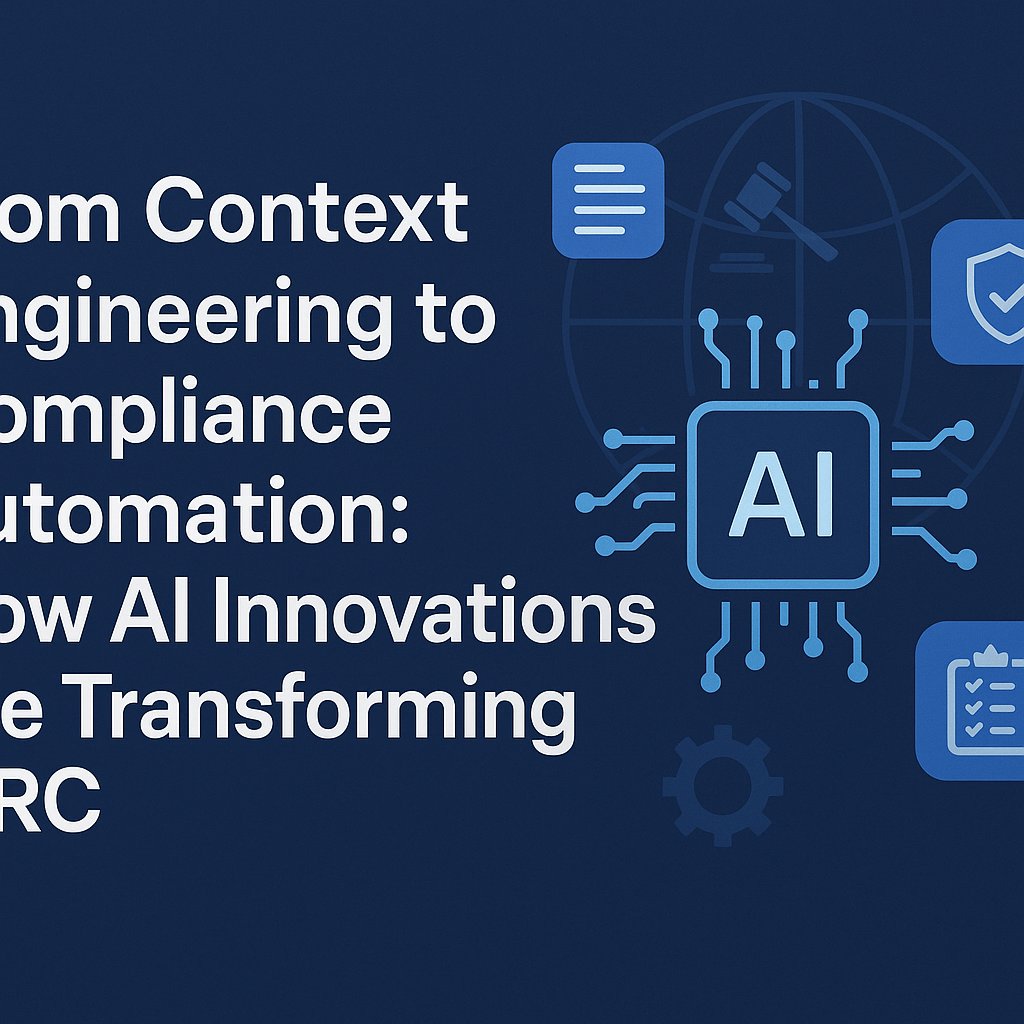From Context Engineering to Compliance Automation: How AI Innovations are Transforming GRC

Introduction
The rapid evolution of artificial intelligence is reshaping Governance, Risk, and Compliance (GRC) workflows. From managing an LLM’s context window to automated regulatory horizon-scanning, new AI innovations are accelerating compliance tasks and enhancing oversight. In this post, we explore how context engineering and related AI breakthroughs are fueling next-generation GRC automation—empowering you to stay audit-ready, manage risk proactively, and navigate shifting regulations with ease.
The Rise of Context Engineering
Traditional prompt-tuning methods have given way to context engineering—optimizing performance by orchestrating retrieval, tool-calling, state management, and conversation history. Experts like Andrej Karpathy and Walden Yan highlight how frameworks such as LangChain, LangGraph, and OpenAI’s ChatGPT connectors (Google Drive, Dropbox, SharePoint, Box) enable AI to access domain-specific data on demand (Research Brief, Jun 25 – Context Engineering emerges as a major trend beyond prompt-tuning)[1].
- Retrieval Augmentation: Pull in policy documents and evidence from your cloud repositories in real time.
- Tool-Calling: Execute compliance checks via integrated APIs, reducing manual lookup.
- State Management: Maintain conversation context across multi-step risk assessments for consistent results.
AI Innovations Driving GRC Transformation
Beyond context engineering, several AI advances are converging to redefine compliance automation:
Integrated Multi-Agent Workflows
- Deploy specialized agents for tasks like control mapping, third-party risk monitoring, and evidence collection.
- Leverage human-in-the-loop review gates to validate AI insights and maintain governance integrity.
Continuous Regulatory Horizon-Scanning
- AI-driven scanners ingest updates from bodies like the EU Council, FATF, and DPC, delivering alerts when rules change.
- For example, when the EU Council backed a rollback of the Corporate Sustainability Reporting Directive to ease burdens on large businesses, automated workflows adjusted sustainability controls accordingly (Research Brief, Jun 25 – EU Council backs a rollback of the CSRD)[2].
Proactive Compliance with Automated Controls
By weaving context engineering into your GRC platform, you can:
- Auto-Map Controls: Match new rules (e.g., GDPR’s lower incident rates post-enforcement) to your internal framework, ensuring continuous alignment (Research Brief, Jun 25 – GDPR’s Quiet Cybersecurity Payoff)[3].
- Prioritize High-Impact Risks: Use adaptive risk scoring that factors in real-time threats and regulatory shifts.
- Streamline Evidence Collection: Assemble audit-ready packages—logs, notifications, approvals—automatically stored in a secure repository.
Best Practices for Implementing AI-Powered GRC
- Start with Critical Use Cases: Focus on high-risk areas like third-party due diligence or sustainability reporting to demonstrate ROI quickly.
- Define Review Gates: Embed expert checkpoints in each agent workflow to verify AI findings and uphold brand values of integrity and accuracy.
- Continuous Training & Validation: Regularly update agent knowledge bases with new case studies, regulations, and auditor feedback.
- Foster Collaboration: Align compliance, IT, and business teams around shared dashboards powered by AI insights.
Conclusion
Context engineering and related AI innovations are unlocking unprecedented efficiency in GRC. By integrating retrieval-augmented workflows, multi-agent orchestration, and continuous horizon-scanning, you transform reactive compliance into proactive risk management. Embrace these technologies—and remember: Compliance. Accelerated by AI. Verified by Experts.
Stay Updated with Our Newsletter
Join our newsletter to receive the latest updates and insights from our blog. Stay informed about compliance trends and best practices.
